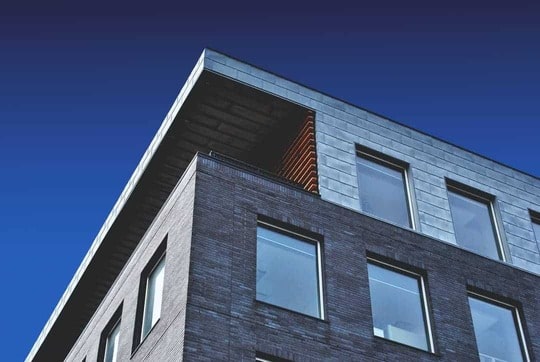Depreciation is often seen as a “dry” topic, but it’s an essential aspect of property investing that can save you thousands of dollars each year.
In simple terms, depreciation refers to an asset’s decline in value over time. For property investors, this means you can claim depreciation deductions for the wear and tear of your investment property. The deduction amount depends on several factors, including whether you own a commercial or residential property.
Commercial property depreciation is unique because it offers both property owners and tenants the opportunity to claim depreciation deductions. Residential properties also have unique depreciation rules, specifically related to those who own second-hand properties.
So, if you want to make the most of claiming tax deductions for depreciation, you need to know the ins and outs of how it applies to your property type.
Here’s the ultimate guide to understanding the difference between commercial vs. residential depreciation.
What is Property Tax Depreciation?
Property depreciation operates on the idea that the structure of a building and the assets contained within the building will decrease in value over time due to wear and tear. The Australian Taxation Office (ATO) recognises this is not an ideal situation for investors and therefore allows them to claim this decrease in value as a depreciation deduction.
Given that you can claim deductions for the depreciation of a wide range of assets, including the building itself, this can result in significant savings for investors if they take advantage of it.
Investors can claim two main types of depreciation: capital works deductions and plant and equipment deductions.
Let’s take a closer look at how these deductions apply to commercial vs. residential property.
What are Capital Works Deductions?
Capital works (Division 43) deductions are available for the structural components of a property, such as the roof, walls, and foundations. Other examples include:
| Residential | Commercial |
| Built-in wardrobes | Built-in workstations |
| Toilets and vanities | Car parking spaces |
| Basins and sinks | Glass partitions |

How Does the ATO Calculate Commercial Investment Property Capital Works Deductions?
The ATO sets out the calculation rules for commercial property based on the type of commercial property in question, the usage of the property and when construction began:
| Commercial Property Type | Travellers Accommodation (such as a hotel) | Non-residential (such as an office or retail shop) | Non-residential used for industrial activities (such as a manufacturing plant or factory) |
| Rate of commercial Property Depreciation | Construction commenced between: 22 Aug 1979 and 21 Aug 1984: 2.5% per year 22 Aug 1984 and 15 Sep 1987: 4% per year 16 Sep 1987 and 26 Feb 1992: 2.5% per year Construction commenced after: 27 Feb 1992: 2.5% per year | Construction commenced between: 20 Jul 1982 and 21 Aug 1984: 2.5% per year 22 Aug 1984 and 15 Sep 1987: 4% per year Construction commenced after: 16 Sep 1987: 2.5% per year | Construction commenced after; 26 Feb 1992: 4% per year |
How Does the ATO Calculate Residential Property Capital Works Deductions?
The ATO similarly sets the percentage for residential capital works deductions based on when the building was built.
Where a residential property was built between 18 July 1985 and 16 September 1987, the depreciation rate is 4%. For any properties built after 16 September 1987, the depreciation rate is 2.5%.
Investors can also claim capital works deductions for depreciation on structural improvements at a rate of 2.5%.
You might also be interested in reading this Essential Guide to a Capital Works Deduction (Division 43)
What are Plant and Equipment Deductions?
Plant and equipment (Division 40) deductions are available for removable items within a property, such as ovens, carpets, and blinds. These deductions are claimed over a shorter time frame, typically between 2 and 15 years, as these items have a shorter lifespan than the property itself; this is known as an asset’s effective life.
The depreciation rate for both commercial and residential properties will depend on the ATO’s “asset effective life schedule,” which guides how long the asset will last.
For example, packaged air conditioning units have an effective life of 15 years.

Unlike commercial properties, residential property investors have limitations regarding the plant and equipment deductions they can claim. These limitations specifically relate to second-hand assets.
Suppose an investor bought a second-hand residential property after 7:30 p.m. on the 9th of May 2017. In that case, they will not be eligible to claim depreciation deductions for any plant and equipment assets contained within the property. The only time, in this instance, where investors can claim plant and equipment depreciation deduction would be if they installed new assets.
For example, if you undertake kitchen renovations on a second-hand property and install a new oven, stovetop, fridge, and new wooden floors, you would be eligible to claim a depreciation deduction for each new asset.
There are also limitations to brand-new residential property purchases where the owner lives in the property before renting it. In such cases where the property was not rented immediately, the ATO considers these plant and equipment assets as second-hand and therefore not eligible to be claimed for depreciation.
You might also be interested in reading this Guide on Effective Life of Depreciating Assets in Property.
Commercial Tenants are Eligible to Claim Plant and Equipment Assets Installed During Fit Out
As mentioned above, commercial depreciation is unique in that deductions are not limited to commercial building owners. Tenants can claim deductions for any assets they install during fit-out after their lease commences.
For example, suppose a commercial property tenant leases office space and instals new air-conditioning units, desks, and shelves, as well as new blinds after the lease commences. In that case, the ATO will allow them to claim the depreciation of those assets over their effective lives.
If the tenant undertakes any structural renovations to the office space, they can also claim deductions for the construction costs.
How Does Claiming Property Depreciation Work for Residential and Commercial Property?
Investors can claim depreciation on their residential and commercial investment properties by appointing a quantity surveyor to prepare a tax depreciation schedule. This schedule factors in the property’s historical construction cost and itemises all of the plant and equipment items within the property eligible for depreciation. The depreciation schedule also estimates how much each item will depreciate over time.
Key Takeaways
Property depreciation is a powerful tool that both commercial and residential property investors can use to reduce their taxable income and pay less tax. As such, investors can also increase their cash flow position by claiming depreciation on their investment properties, making them more profitable.
If you’re considering investing in property and want to know more about how commercial and residential property depreciation works, get in touch with a Duo Tax Quantity Surveyor today.
Our team of specialist quantity surveyors has years of experience preparing schedules for residential and commercial properties. We know exactly what to look for to maximise your deductions and minimise your tax liability.
Plus, we offer a free consultation so that you can see how we can help you before you commit to anything. So, why not give us a call and see how we can help you save money on your property investment?

Ready to get started?
Talk to one of our friendly property experts to get a free quote or more Information.










